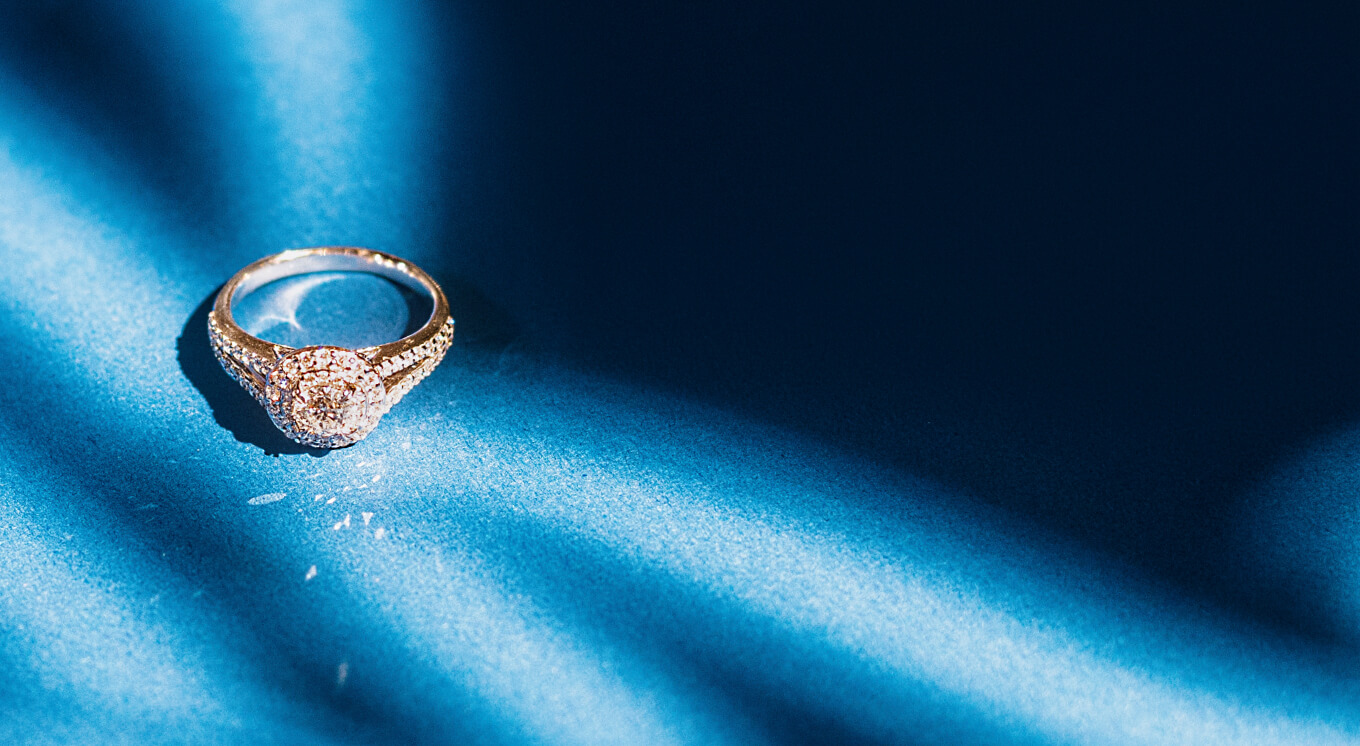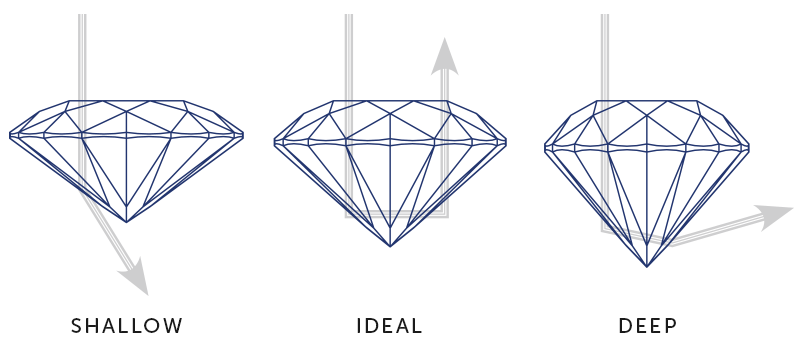
Diamond 101
01. Carat
Carat refers to a diamond’s weight. One carat, the traditional unit of measurement for diamonds, is approximately 0.2 grams. You may also hear the weight of a diamond referred to in points or fractions. One carat is equivalent to 100 points, so a 75-point diamond is equal to 0.75 carats or 3/4 of a carat.

02. Cut
A diamond’s cut grade is an objective measure of a diamond’s light performance, or the amount of sparkle a diamond has. A diamond’s overall proportions and the size and position of its facets make up the cut. These factors can greatly affect how the stone captures light and reflects it back to the eye.

03. Color
One factor that determines the value of a diamond is its color. With the exception of fancy-colored diamonds, the most valuable diamonds are those with the least color. Completely colorless diamonds are very rare (and pricey). The diamond color scale ranges from D (colorless) to Z (light yellow).
Fancy Colors
When diamonds are formed with traces of other minerals, rare and beautiful colors can result. These “fancy” colors range from blue and brilliant yellow to red, brown, pale green, pink, and violet. Because of their rarity, colored diamonds are highly desirable and typically more valuable.

04. Clarity
A diamond’s clarity is measured by the existence or absence of visible imperfections. Surface blemishes, inclusions, or internal imperfections, even those seen only under magnification, affect a diamond’s value. The fewer imperfections, the more rare the diamond.
Clarity levels begin with flawless (FL, IF), followed by very, very slight (VVS1, VVS2), very slight (VS1, VS2), slightly included (SI1, SI2), and included (I1, I2, and I3).
